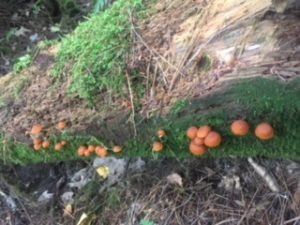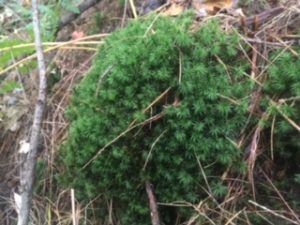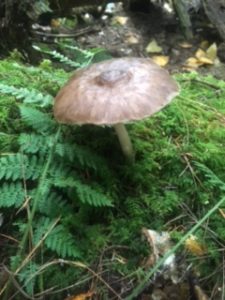My Phenology site is located in Centennial Woods. It is compromised of a ferny valley and the two hillsides that border it.
Directions
To arrive there, you follow the main path from the entrance of Centennial. When you have gone across the creek and arrived at the clearing, follow the path that goes down hill. This path continues straight until you arrive at the telephone lines. After entering the cleared area where the lines run, turn right. Follow this path briefly until you approach a bridge over the creek. There should be a small path to the right shortly before the bridge. Turn onto this path, and you will soon arrive at a few wooden pallets covering a mucky area. The valley is directly to the right of these pallets. I chose this spot because it contains a lot of my favorite plants, and requires a nice walk to get to.
Trees
There are three dominant tree species in my site. These species are Yellow Birch, Eastern Hemlock, and Eastern White Pine. The Birch mostly inhabit the northern portion of the site, while the Hemlock and Pine are more common throughout southern portion. The Birch and Hemlock range from saplings to fully mature. The White Pines however, are by far the largest trees in the area, both in height and diameter. There are no White Pine saplings present. There are also quite a few Norway Maple saplings towards the southern end, as well as a few Red Maple saplings and a handful of adult Red Maples. Most of the trees are found on the hillsides, not in the valley itself, so many of them are growing on an angle towards the valley.
Woody Plants
There are a few normal Buckthorns in my site, as well as one Barberry. There were two other types of woody shrub that I am unable to identify at the moment, but neither occurred frequently.
Vegetation
The non-woody vegetation in my site is comprised almost entirely of ferns. There are clearly three distinct species present, although I would not feel comfortable identifying them at the moment.
Other
Moss is abundant in my site. I have found at least three different species, one of those being Star Moss. The other two I currently cannot ID. This high amount of moss goes in tandem with the large amount of woody debris in the site. Much of this debris seems to have been decomposing for long amounts of time, and has given rise to moss and at least six different mushroom/fungus species. The organic horizon of the substrate is composed mostly of White Pine needles and Yellow Birch leaves.
https://drive.google.com/open?id=1UCNWwi5XG1WJkU9ORCZero5TfeLGOOJG&usp=sharing


